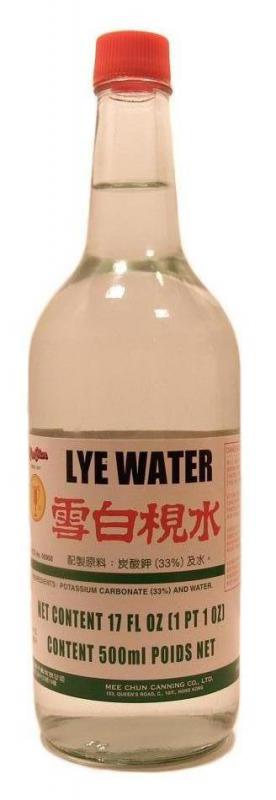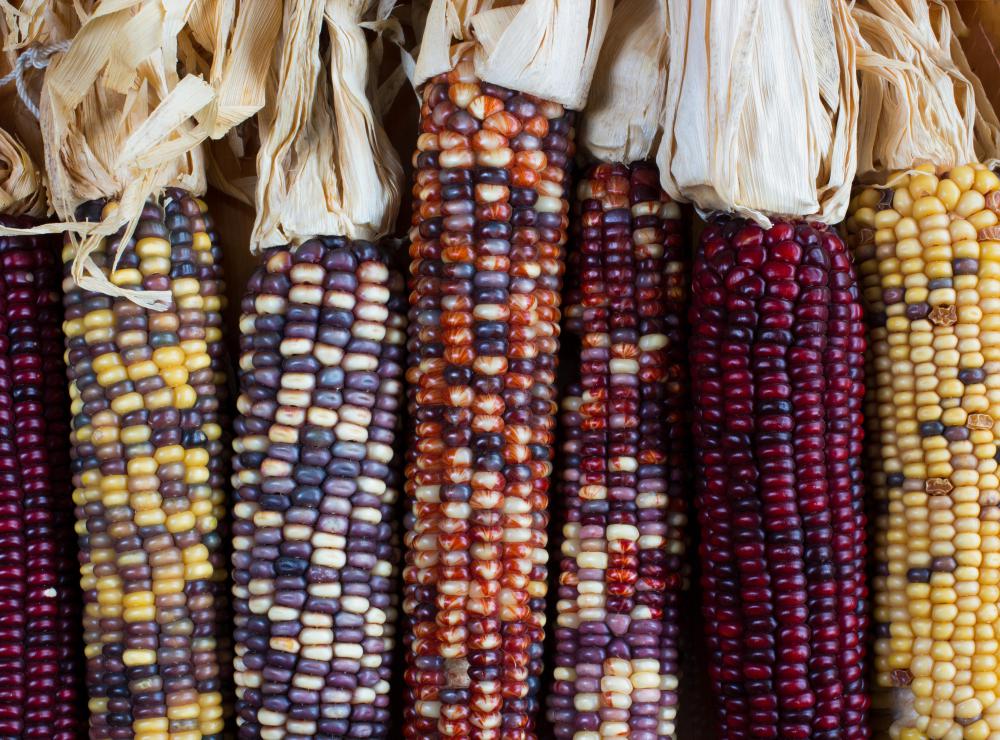At DelightedCooking, we're committed to delivering accurate, trustworthy information. Our expert-authored content is rigorously fact-checked and sourced from credible authorities. Discover how we uphold the highest standards in providing you with reliable knowledge.
What is Flint Corn?
Flint corn is a variety of corn which is extraordinarily hard, but still usable in a wide range of applications. Dried ears of this vegetable are sometimes used decoratively, because they have distinctive and colorful kernels. When used decoratively, it is sometimes called Indian corn. The corn also has food use as well, however, and it is grown on several continents.
The formal name for flint corn, as with all corn varieties, is Zea mays. Numerous cultivars of this highly useful plant have been developed over the centuries, all selected to exhibit particular properties. The origins of Zea mays can be found in a humble grass, which still grows wild in parts of Central America. This grass was domesticated and bred to produce large ears of corn thousands of years ago by Native Americans, and it was an important part of their diet. When European explorers were introduced to the food, they brought it back with them and corn became a ubiquitous inclusion in the nutrition of people all over the world.

The kernels of an ear of flint corn can range from snow white to black in color. It is not uncommon to see an assortment of multicolored kernels on one ear. The kernels are made harder than other varieties of corn by a thick shell which covers the usable interior of the corn. This shell can be removed through processing to make the kernels into a usable food for people and animals.

One common use of flint corn is polenta, a dish which is traditionally made with ground corn. Hominy, also called posole, is also made from the same vegetable. To make hominy, the hard kernels are soaked in water and lye to release the hard shells and free up the nutrients in the corn. Hominy is the base of masa harina, a special type of corn flour, and an assortment of other dishes. Purple corn chips and tortillas are made from hominy with a preponderance of purple kernels. One variant on flint corn, popcorn, is particularly adored in many parts of North America.

Farmers also grow flint corn so that it can be processed into animal fodder. In addition, the corn can go through a variety of industrial processes to extract useful compounds. Collectively, the numerous cultivars of corn make up one of the most heavily grown and harvested crops in the world.
AS FEATURED ON:
AS FEATURED ON:














Discussion Comments
There's nothing like the aroma that comes from grilling corn on the cob on a weekend, knowing you can enjoy it with your friends and family.
For those of us with roots in Vermont this food is extra special, as it was the only crop to survive and produce food during the infamous 1816 'year without a summer'.
I would argue that it also makes the very best cornmeal you can buy, but I could be a little biased.
I love to put flint corn/Indian corn, of all colors, into a cornucopia at Thanksgiving time. It really is beautiful and gives the house a good feeling.
How this flint corn came into being is a very interesting story. It started out as a plain wild grass,Zea mays. Over many centuries, it was domesticated into the corn we know today, by the Native Americans. How they got from a simple grass to ears of corn in a rainbow of colors is beyond me!
To think that flint corn can be used to make so many delicious dishes like polenta, hominy, purple corn chips, which I love, and of course, popcorn.
Thanks to the Native Americans for their patience and work in domesticating flint corn.
Post your comments